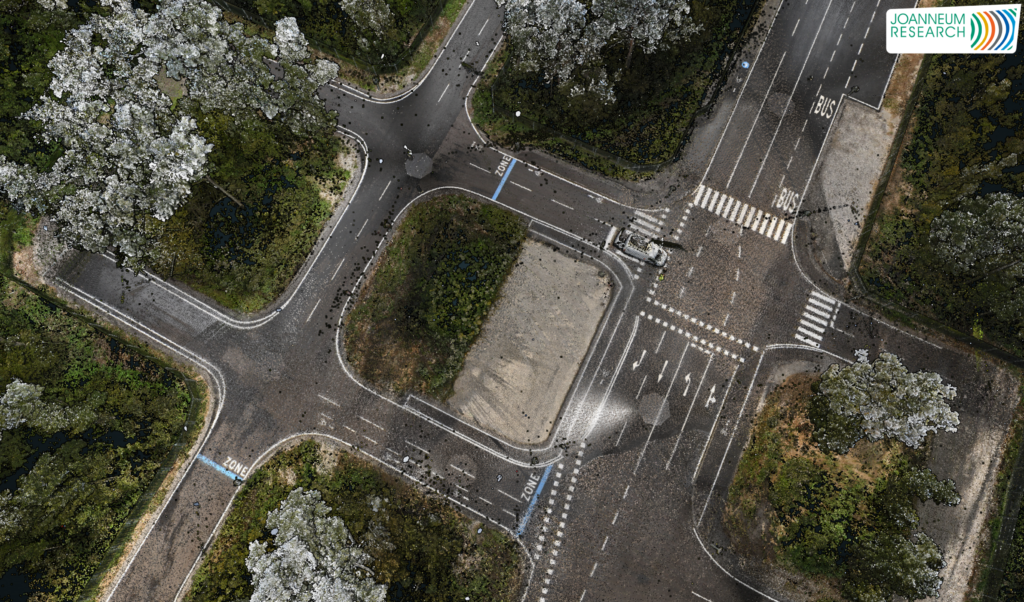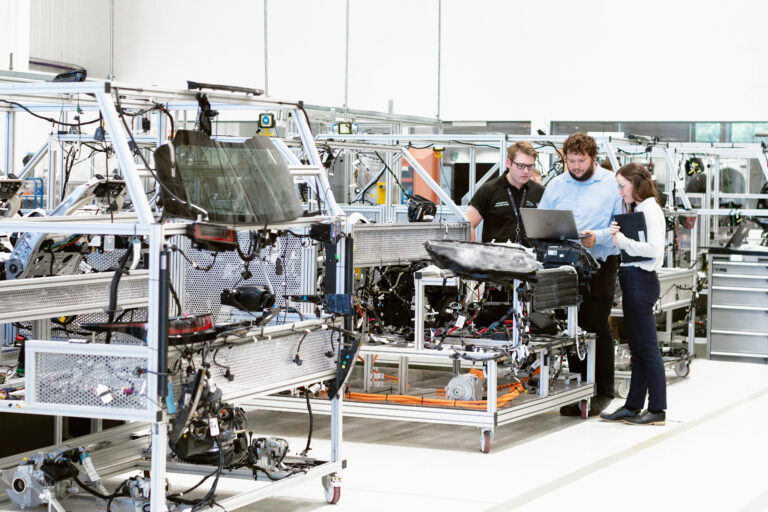Digitrans Test Center for Automated Driving: Joanneum Research creates digital twin for the test track in St. Valentin as part of testEPS
As part of the transnational cooperative research project testEPS (Testing and verification methods of automated driving functions and EPS), funded by the BMK, JOANNEUM RESERACH created a three dimensional digital twin of the test track in St.Valentin as a reference for testing and verification of automated driving functions.
The aim of the measurements is the generation of highly accurate reference maps (UHDmaps®) as well as a detailed 3D reconstruction of the entire test area of the Magna Powertrain Engineering Center Steyr and the Digitrans test center for automated driving on the test track in St. Valentin.
How is the digital twin used for automated driving on the test track in St. Valentin?
On the Proving Ground in St. Valentin, the digital images enable sophisticated tests and simulations of automated driving functions to be carried out, including the physical wave propagation of radar or lidar signals used by automated vehicles to scan their surroundings (sensor simulation).

Preview digital twin: 3D reconstruction of the test track in St. Valentin
© joanneum Research Forschungsgesellschaft mbH

Technical details of the digital twin recorded on the Proving Ground in St. Valentin.
For the first time, a combination of the latest measuring equipment was used for the highly accurate mapping, which was carried by a vehicle, a drone and also a person. The new DIGITAL TWIN LAB of JOANNEUM RESEARCH (BMK-funded research infrastructure) is able to create seamless digital images of the Proving Ground in St. Valentin thanks to the unique combination of recording options from different perspectives and data fusion methods. The final fused images provide extreme detail for realistic simulations and tests.





all pictures © DigiTrans GmbH
Further developments of the digital twin of Proving Ground in St. Valentin
In the next step, highly accurate reference maps (UHDmaps®) and 3D models will be derived from the fused measurement data of the Proving Ground in St. Valentin in the DIGITAL TWIN LAB using automated evaluation methods based on image processing and artificial intelligence (AI).
The project partners of testEPS, Virtual Vehicle Research GmbH and the Graz University of Technology, as well as AVL and AiMotive, will further use the 3D digital twins of the test track in St. Valentin for testing and simulating automated vehicles and their environment perception.
You might also be interested in
Further Insights

Five reasons why we built an outdoor rain plant for testing autonomous driving functions
Testing autonomous driving functions and their sensors under adverse weather conditions is an important safety criterion for the introduction of automated vehicles in Europe. Learn why it is becoming increasingly important to test these systems systematically and reproducibly.

Initial tests for the recognition of road markings on the Digitrans proving ground in St. Valentin
On the Digitrans proving ground for autonomous driving in St. Valentin, the Chair “Sustainable Transport Logistics 4.0” of the Johannes Kepler University Linz and SWARCO Road Marking Systems were able to carry out the first successful tests for the recognition of road markings.

functional safety of automated driving functions – cooperation with msg Plaut
Digitrans and msg Plaut will cooperate in the field of automated safety and vehicle testing in the future and use the joint network for more extensive cooperations and projects.
